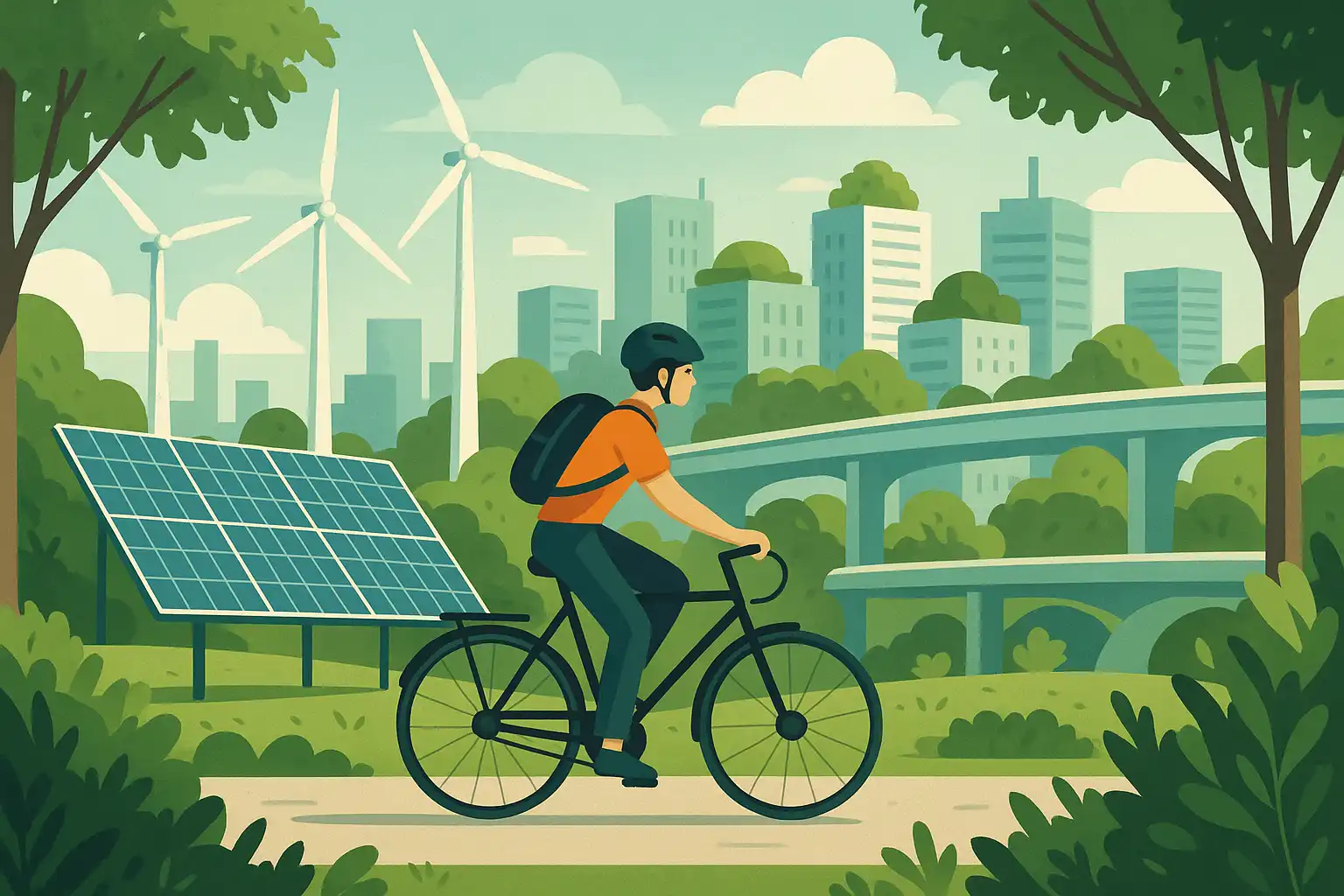Sustainable cycling has evolved from a niche environmental concern to a mainstream movement that’s reshaping the cycling industry and influencing how cyclists think about their environmental impact. In 2025, sustainability considerations are driving innovation in bike manufacturing, influencing consumer purchasing decisions, and inspiring new approaches to cycling infrastructure and community development.
The cycling industry’s commitment to sustainability extends throughout the entire product lifecycle, from raw material sourcing and manufacturing processes to end-of-life recycling and disposal. This comprehensive approach to sustainability is creating new opportunities for environmentally conscious cyclists while driving innovation that benefits all riders.
## Manufacturing Revolution: Green Production Methods
The bicycle manufacturing industry has undergone a dramatic transformation in its approach to environmental sustainability. Leading manufacturers are implementing comprehensive sustainability programs that address every aspect of production, from material selection to energy use and waste management.
Recycled and sustainable materials are becoming increasingly common in bicycle production. Aluminum frames made from recycled content, carbon fiber recycling programs, and the use of sustainable materials like bamboo and hemp in frame construction are reducing the environmental impact of bike manufacturing.
Energy efficiency in manufacturing facilities has improved dramatically, with many manufacturers investing in renewable energy sources like solar and wind power to reduce their carbon footprint. Some facilities have achieved carbon-neutral production through a combination of energy efficiency improvements and renewable energy adoption.
Water conservation and waste reduction programs in manufacturing facilities are minimizing environmental impact while often reducing production costs. Closed-loop water systems, waste heat recovery, and comprehensive recycling programs are becoming standard practices in sustainable bike manufacturing.
Supply chain sustainability initiatives are extending environmental responsibility throughout the entire production network. Manufacturers are working with suppliers to improve environmental practices, reduce transportation emissions, and ensure ethical labor practices throughout the supply chain.
## Carbon Footprint Analysis: The True Impact of Cycling
Comprehensive lifecycle assessments of cycling’s environmental impact demonstrate that bicycles are among the most environmentally friendly forms of transportation available. Even when accounting for manufacturing, maintenance, and end-of-life disposal, cycling produces dramatically lower emissions than any motorized transportation option.
Transportation emissions comparisons show that cycling produces virtually zero operational emissions, while cars, motorcycles, and even electric vehicles produce significant emissions through electricity generation or fuel consumption. The carbon footprint of cycling is typically 10-20 times lower than driving for equivalent trips.
Manufacturing emissions for bicycles are relatively low compared to motor vehicles, and the long lifespan of quality bicycles means that these emissions are amortized over many years of use. High-quality bicycles can provide decades of service with proper maintenance, making their environmental impact per mile extremely low.
Maintenance and replacement part emissions are minimal for bicycles compared to motor vehicles. The simplicity of bicycle technology means that maintenance requirements are low, and most maintenance can be performed with simple tools and minimal energy consumption.
End-of-life considerations for bicycles are generally positive, as most bicycle components can be recycled or repurposed. Steel and aluminum frames have high recycling value, and many components can be refurbished and reused, extending their useful life beyond the original bicycle.
## Sustainable Cycling Tourism: Exploring Responsibly
Cycling tourism has emerged as one of the most sustainable forms of travel, allowing tourists to explore destinations with minimal environmental impact while supporting local economies and communities. Sustainable cycling tourism practices are being developed and promoted worldwide.
Local economic benefits of cycling tourism are substantial, as cyclists tend to spend money on local accommodations, restaurants, and services rather than large chain establishments. This spending pattern helps support local communities and preserves the authentic character of destinations.
Low-impact travel practices in cycling tourism include staying in locally-owned accommodations, eating at local restaurants, and purchasing supplies from local businesses. These practices minimize environmental impact while maximizing economic benefits for destination communities.
Route planning for sustainable cycling tourism considers environmental sensitivity, local regulations, and community impact. Responsible tour operators and individual cyclists choose routes that minimize environmental damage and respect local communities and wildlife.
Leave No Trace principles adapted for cycling tourism help ensure that cycling activities don’t negatively impact the environments and communities that cyclists visit. These principles include proper waste disposal, respecting wildlife and vegetation, and minimizing noise and visual impact.
## Urban Sustainability: Cycling’s Role in Green Cities
Cycling plays a crucial role in sustainable urban development, contributing to reduced emissions, improved air quality, and more livable cities. Urban planners increasingly recognize cycling infrastructure as essential for sustainable city development.
Air quality improvements from increased cycling adoption are measurable and significant. Cities with high cycling rates consistently show better air quality metrics, particularly for pollutants directly related to vehicle emissions like nitrogen oxides and particulate matter.
Reduced urban heat island effects result from cycling infrastructure that includes green elements like tree-lined bike paths and bioswales. These green infrastructure elements help cool urban environments while providing cycling facilities.
Space efficiency of cycling infrastructure allows cities to accommodate more people and economic activity in less space, reducing urban sprawl and preserving natural areas. The space required for cycling infrastructure is dramatically less than that required for equivalent automobile capacity.
Noise pollution reduction from increased cycling adoption creates quieter, more pleasant urban environments. Bicycles produce virtually no noise compared to motor vehicles, and increased cycling rates can significantly reduce urban noise levels.
## Circular Economy: Extending Bicycle Lifecycles
The cycling industry is embracing circular economy principles that prioritize reuse, refurbishment, and recycling over disposal. These approaches extend the useful life of bicycles and components while reducing waste and environmental impact.
Bike refurbishment programs are becoming more common, with organizations and businesses specializing in restoring used bicycles to like-new condition. These programs provide affordable bicycles while reducing waste and extending product lifecycles.
Component recycling and reuse initiatives are developing markets for used bicycle parts, allowing components to be refurbished and reused rather than discarded. This approach reduces waste while providing affordable replacement parts for bicycle maintenance.
Take-back programs offered by some manufacturers allow customers to return old bicycles for proper recycling and disposal. These programs ensure that bicycles are disposed of responsibly while recovering valuable materials for reuse.
Modular design approaches in new bicycle development make it easier to repair, upgrade, and recycle bicycles. Designs that allow easy component replacement and upgrade extend bicycle lifecycles while reducing waste.




